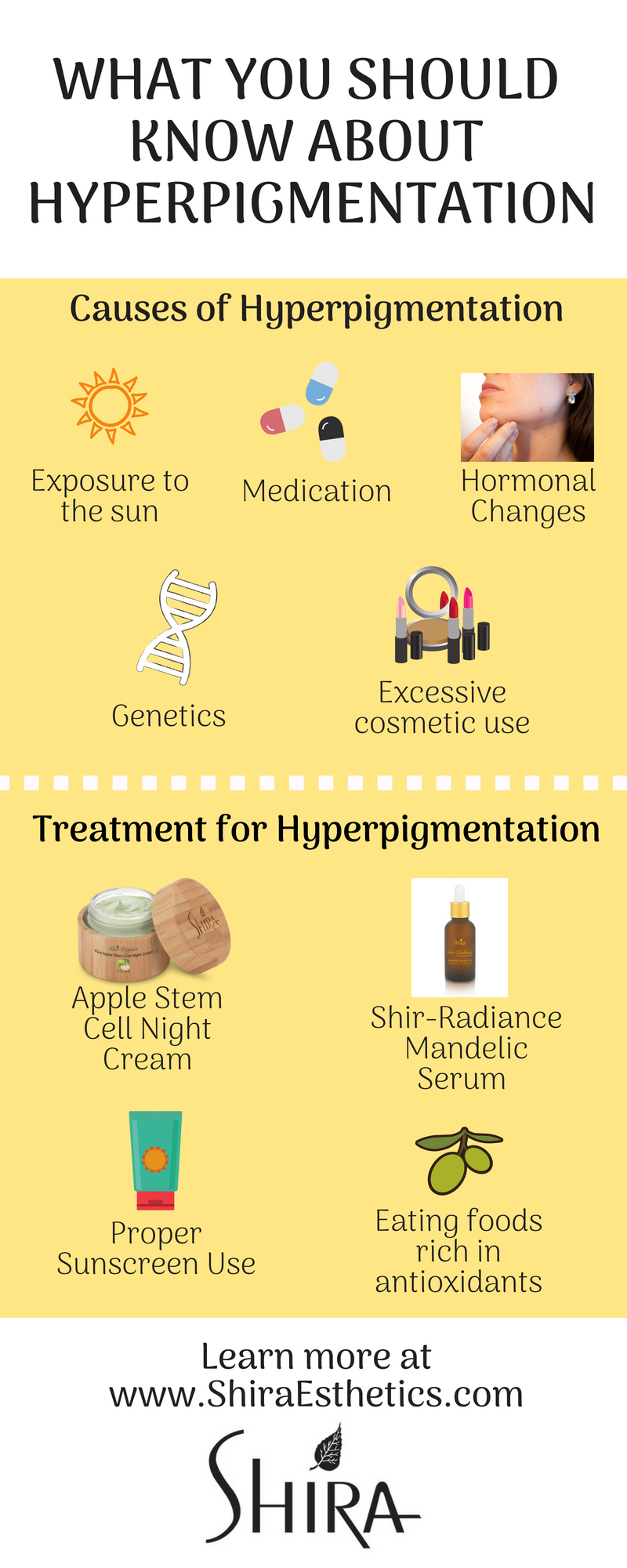Your skin is the largest and most exposed organ of your body. If your skin is exposed to the harmful rays of the sun for too long, you may notice that the color of your skin darkens. This change is known as hyperpigmentation. While this condition is generally harmless, some people dislike the appearance of these dark spots, and anti-aging cream and other products from Shira Esthetics can help to combat any symptoms.
What Is Hyperpigmentation?
Hyperpigmentation is the overproduction of melanin in a spot or patch of skin. Melanin is the pigment that gives our skin, hair, and eyes their color.
Causes and Treatments for Hyperpigmentation
Unless you’re looking at a photoshopped image, you will notice that most people have some form of uneven complexion or hyperpigmentation. Contrary to what social media and fashion magazines would like you to believe, human skin is dynamic and imperfect in its beauty. However, some cases of hyperpigmentation are more severe than others, and it’s natural to have insecurity about your skin’s condition.
Hyperpigmentation presents as dark spots or patches on the surface of the skin. For some people, these patches or dark spots may resemble a “five o’clock shadow.” Individuals with more melanin in their skin are more likely to be affected by hyperpigmentation.
Hyperpigmentation can be categorized in two ways. In some cases, hyperpigmentation is the result of aging or sun exposure. In other cases, it’s a symptom of other skin conditions such as melasma and post-inflammatory hyperpigmentation, both of which tend to stem from hormonal changes.
The Relationship Between Sun Exposure and Hyperpigmentation
UV exposure is one of the most common triggers for hyperpigmentation. In many ways, melanin is your skin’s natural defense from UV damage, like sunburns. In general, people who spend time in the sun end up with a suntan, but excessive sun exposure can lead to long-term damage that doesn’t fade in the winter.
Once hyperpigmentation has presented itself, sun exposure can darken your existing spots and make them more noticeable.
Hyperpigmentation, like melasma, is the result of hormonal changes.
Though hyperpigmentation is almost always triggered or worsened by sun exposure, hormonal changes play a big part in skin conditions like melasma. Melasma tends to appear in women of reproductive age. Colloquially, melasma is referred to as “the mask of pregnancy.”
Post-inflammatory disorder is one of the leading causes of hyperpigmentation.
Post-inflammatory disorder (PID) and the resulting hyperpigmentation occurs when your skin incurs an injury or trauma. Many people’s experience with PID is related to acne scarring or a healed gash or cut to your skin. Once the injury heals, post-inflammatory hyperpigmentation will present as a flat dark spot in the affected area.
Common treatments for hyperpigmentation include laser therapy, at-home and medical-grade skin peels, and a targeted skincare regimen. Shop with us today to purchase our phenomenal wrinkle creams for sale, along with countless other products!


